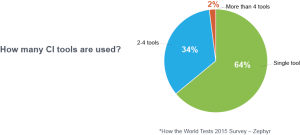Out of numerous technologies, automation and continuous integration are making the biggest impacts on software development. Quality assurance teams must be ready for these practices and ensure that they understand how they will affect their current workflows. Here are four ways that automation integration and CI are changing testing and development for the better:
Reduces Risks
One major benefit is that these practices reduce the overall risks of projects. By leveraging devops continuous integration, teams can establish automated builds, create a stronger foundation, synchronize version control repository and enhance visibility, according to DevOps contributor Ragnar Lonn. This will help lower the potential risks, encourage buy-in and enable teams to create more projects that may not have otherwise been possible.
Supports agile
Agile transitions can be a challenge, but they can be facilitated with automation and CI practices. Automation is the only way to achieve the high test coverage needed throughout each sprint, while CI supports the regular deployment of the finished versions. Together, they can fully support agile test processes and ensure that teams are able to achieve the flexibility they need. In this way, the two tools are significantly changing how QA works and what type of workflows are expected in each stage.
Continuous Integration Testing
Traditionally, software testing was always pushed to the end of a project, giving QA teams little room for error and often leaving apps under-evaluated. However, a majority of developers claim that automation and CI are changing the way that they test. According to a survey by Dimensional Research, 61 percent of respondents are now testing earlier in the development cycle and are executing more of all types of testing – with the exception of manual testing. This is significant, because not only do these tools help identify and mitigate issues earlier, it also inherently leads to better quality software across the board.

Tool implementation
In order to facilitate these operations, many QA teams have turned to tools that will enable better defect management and agile support. According to Zephyr’s annual, How The World Tests Report, more than half of companies are using more than one automation tool, whereas 64 percent are using only one CI tool. There were 42 percent of participants using or planning to use Selenium, but as Zephyr pointed out, this solution can’t do everything, making it necessary to integrate other services that will complement it and make up for testing needs. The future might weel be Automation and continuous integration working together.
